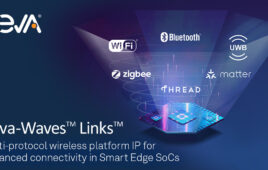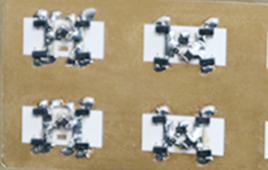Quantum computing and quantum information processing technology have attracted attention in recently emerging fields. Among many important and fundamental issues in nowadays science, solving Schroedinger Equation (SE) of atoms and molecules is one of the ultimate goals in chemistry, physics and their related fields. SE is “First Principle” of non-relativistic quantum mechanics, whose solutions termed wave-functions can afford any information of electrons within atoms and molecules, predicting their physicochemical properties and chemical reactions. Researchers from Osaka City University (OCU) in Japan, Dr. K. Sugisaki, Profs. K. Sato and T. Takui and coworkers have found a novel quantum algorithm enabling us to perform full configuration interaction (Full-CI) calculations suitable for “chemical reactions” without exponential/combinatorial explosion. Full-CI gives the exact numerical solutions of SE, which are intractable problems with any supercomputers. Such a quantum algorithm contributes to the acceleration of implementing practical quantum computers. Nowadays chemistry and physics have sought to predict complex chemical reactions by invoking Full-CI approaches since 1929, but never been successful until now. Now Full-CI calculations are potentially capable of predicting chemical reactions, and a new Full-CI approach suitable for the prediction is implemented on quantum computers, for the first time.
The paper will be published at 8:00 AM on Jan. 2, 2019 (US Eastern Time Zone) in ACS (American Chemical Society) Central Science.
They said, “As Dirac claimed in 1929 when quantum mechanics was established, the exact application of mathematical theories to solve SE leads to equations too complicated to be soluble [1]. In fact, the number of variables to be determined in the Full-CI method grows exponentially against the system size, and it easily runs into astronomical figures such as exponential explosion. For example, the dimension of the Full-CI calculation for benzene molecule C6H6, in which only 42 electrons are involved, amounts to 1044, which are impossible to be dealt with by any supercomputers. What is worse, molecular systems during the dissociation process are characterized by extremely complex electronic structures (multiconfigurational nature), and relevant numerical calculations are impossible on any supercomputers.”
According to the OCU research group, quantum computers can date back to a Feynman’s suggestion in 1982 that the quantum mechanics can be simulated by a computer itself built of quantum mechanical elements which obey quantum mechanical laws. After more than 20 years later, Prof. Aspuru-Guzik, Harvard Univ. (Toronto Univ. since 2018) and coworkers proposed a quantum algorithm capable of calculating the energies of atoms and molecules not exponentially but polynomially against the number of the variables of the systems, making a breakthrough in the field of quantum chemistry on quantum computers [2].
When Aspuru’s quantum algorithm is applied to the Full-CI calculations on quantum computers, good approximate wave functions close to the exact wave functions of SE under study are required, otherwise bad wave functions need an extreme number of steps of repeated calculations to reach the exact ones, hampering the advantages of quantum computing. This problem becomes extremely serious for the analyses of chemical reactions, which have many multiconfigurational nature due to electrons not participating in chemical bonding during the bond dissociation. The OCU researchers have tackled this problem, one of the most intractable issues in quantum science and chemistry, and made a breakthrough in implementing a new quantum algorithm generating particular wave functions termed configuration state functions (CSFs) in polynomial computing time in 2016 [3] and 2018 [4].
The previously proposed algorithms for quantum computing, however, are still demanding to efficiently solve SE for whole chemical reaction pathways, which inevitably involve the dissociation and formation of many chemical bonds and, as a result, generate so many electrons not participating in chemical bonds, making the quantum algorithms difficult to apply, termed “Quantum Dilemma”. The OCU researchers have introduced a “diradical character, yi(0 ~ 1)” to measure and characterize the nature of open shell electronic structures, and exploited the diradical characters to construct multiconfigurational wave functions required for chemical reactions, executing the Full-CI calculations along the whole reaction pathways on quantum computers. This new procedure requires no time-consuming sophisticated post-Hartree-Fock calculations, avoiding the exponential explosion of the calculation and solving “Quantum Dilemma”, for the first time. The OCU group said, “This is the first example of a practical quantum algorithm, which makes quantum chemical calculations for predicting chemical reaction pathways realizable on quantum computers equipped with a sizable number of qubits. The implementation empowers practical applications of quantum chemical calculations on quantum computers in many important fields of chemistry and materials science.”




